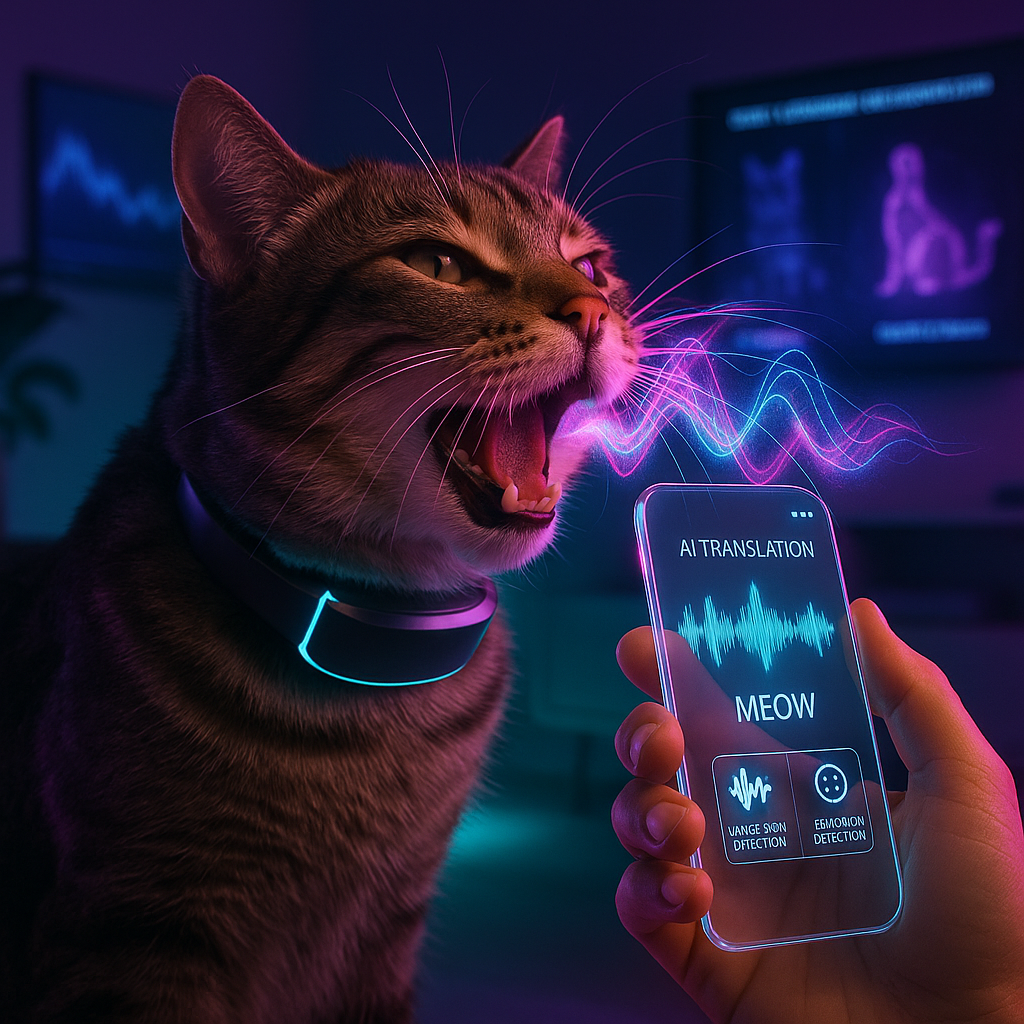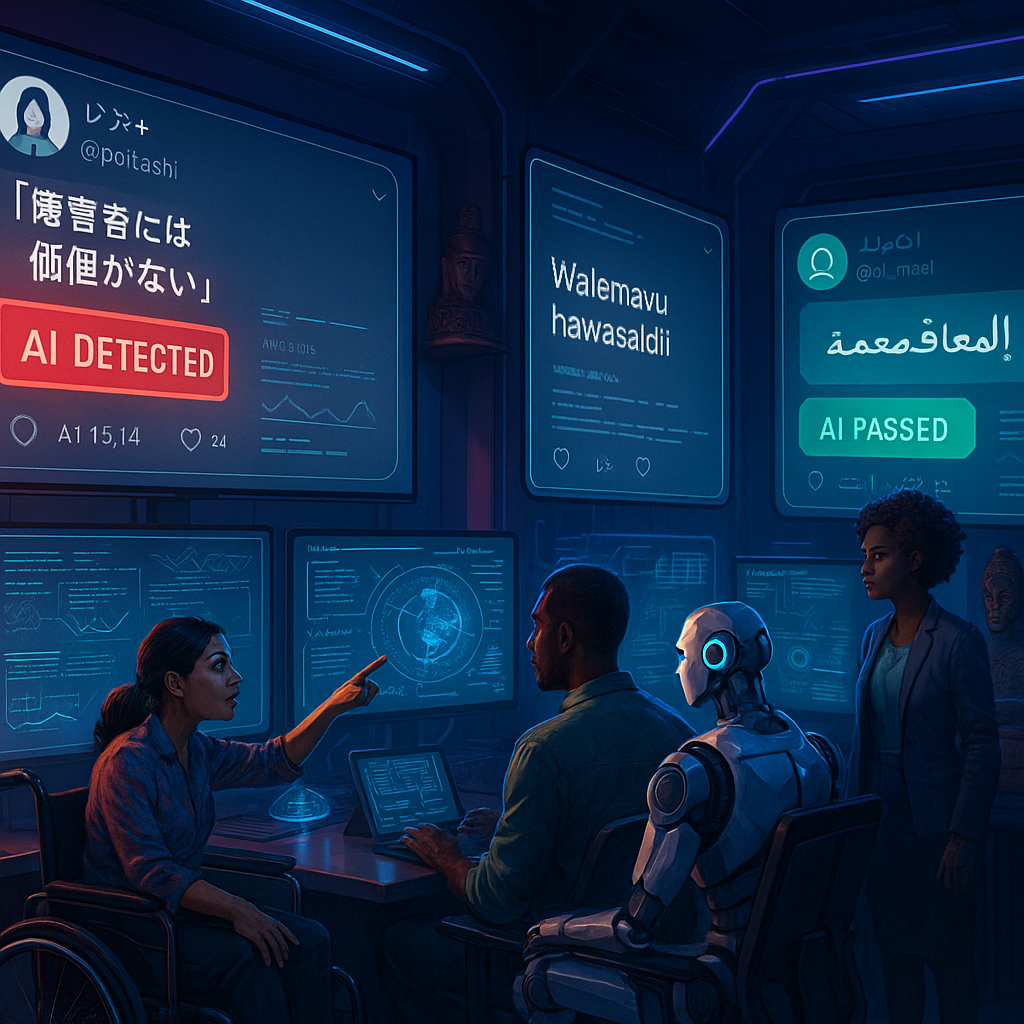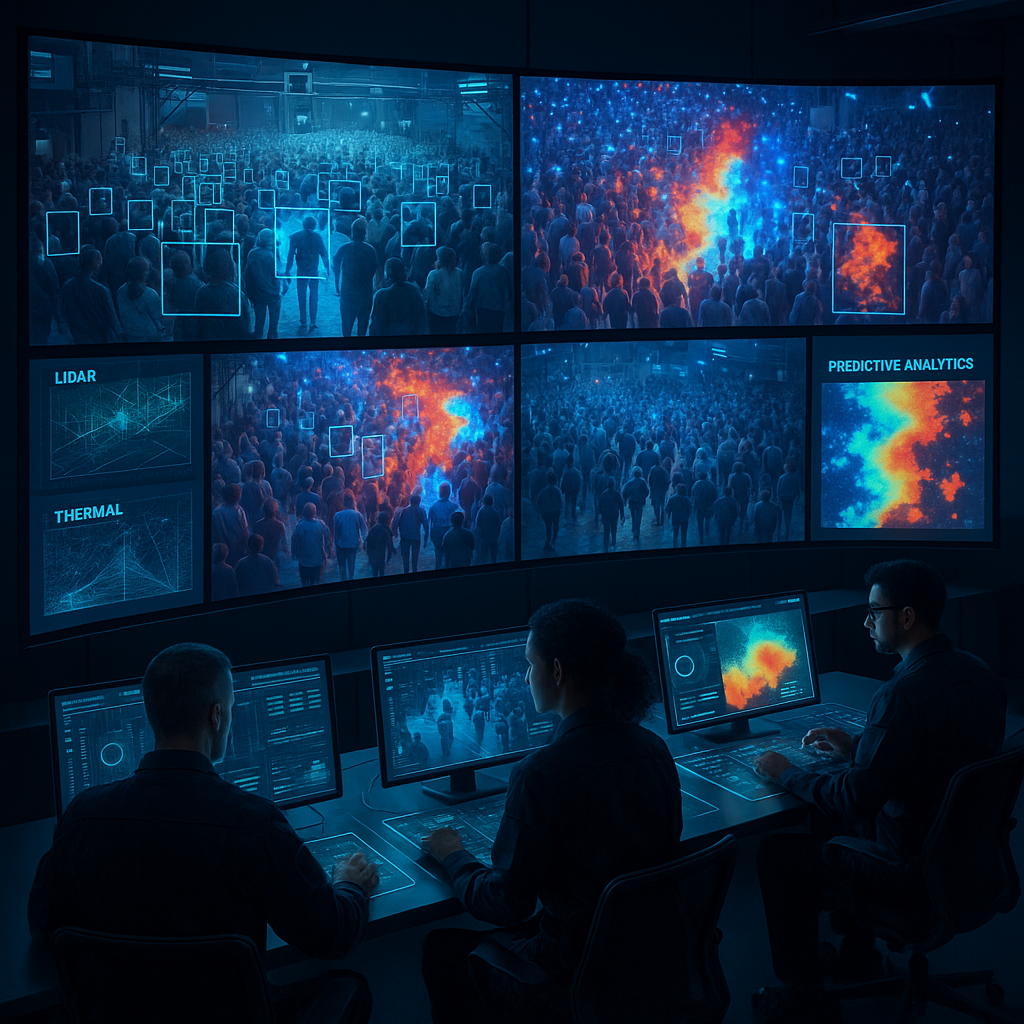Key Takeaways
The dream of chatting with our cats edges closer to reality as cat-human AI translation tools promise to decode meows and bridge the vast gulf between species. Yet, beyond science fiction allure and the marvel of the technology itself, these emerging tools are catalyzing a profound shift in how we observe, empathize with, and care for our feline companions. Here are the most provocative insights reimagining what it means to “talk” with our cats in the age of artificial intelligence.
-
AI listens, humans awaken: Attention replaces assumption
Cat-human AI translation is not merely about decoding meows. Instead, it prompts humans to become more mindful, nuanced observers of their pets’ complex behaviors and subtle emotional cues. This newfound attentiveness lays the foundation for richer interspecies empathy. -
Not mind-reading, but pattern-finding
Current AI interpretation of feline vocalizations leans on deep learning models that detect recurring patterns in pitch, duration, and context, converting meows into likely meanings. True understanding, however, remains elusive, since AI relies on the constraints of available behavioral data and cannot fully grasp the subjective feline experience. -
From daily care to advanced diagnostics
Applications now extend far beyond labeling cats as simply “hungry” or “happy.” Smart collars and AI-powered apps can help identify signs of stress, pain, or illness. This hints at a future where AI augments not only everyday pet parenting but also veterinary diagnostics through advanced animal behavior detection and emotion recognition. -
Ethics in the cross-species spotlight
Delving into pet communication with AI reveals new ethical frontiers. Can we trust these algorithmic interpretations? Are we at risk of projecting human biases onto animal minds? These questions challenge the boundaries between human intuition and machine learning, raising important debates about consent, privacy, and anthropomorphism. -
Beyond translation: Technology reframes companionship
Cat language translation offers more than technical answers. It is sparking philosophical questions about consciousness, agency, and what it truly means to “hear” another species. Technology thus becomes a lens for re-examining companionship and connection across the species divide. -
Tomorrow’s interspecies dialogue is a shared evolution
The future of AI-facilitated pet communication leans less on perfect accuracy and more on co-evolving understanding. As humans learn to listen more deeply while machines become better translators, empathy itself may emerge as the universal language that defines our relationship with the animal world.
As we explore the unfolding story of cat-human AI translation, prepare to rethink the boundaries of communication. This journey is not merely about gadgets and algorithms, but about cultivating attention, empathy, and a philosophy of interspecies connection. One meow at a time.
Introduction
Each cat guardian has, at some point, wondered what their inscrutable companion is really trying to say—with every meow, trill, or enigmatic silence. Today, cat-human AI translation tools claim to be lifting the veil on these mysteries, inviting us to listen as never before and challenging long-held assumptions about the possibilities of animal communication.
However, these new technologies are doing far more than decoding vocalizations. They urge us toward deeper attention and empathy, reshaping our relationship with cats through both scientific rigor and philosophical inquiry. From smart collars that monitor health to apps that allegedly distinguish hunger from distress, the promise of AI-assisted translation is rapidly changing what it means to connect across species.
Stay Sharp. Stay Ahead.
Join our Telegram Channel for exclusive content, real insights,
engage with us and other members and get access to
insider updates, early news and top insights.
 Join the Channel
Join the Channel
In the sections ahead, we will discover how cat-human AI translation is ushering in a new era of interspecies dialogue. What does this leap reveal about consciousness, understanding, and the nuanced practice of truly hearing another mind?
Current State of Cat-Human AI Translation
Breaking the Communication Barrier
The appearance of AI-powered translation systems marks a captivating intersection of machine learning, animal behavior science, and everyday pet care. These systems analyze two principal components: the acoustic patterns of cat vocalizations and the visual signals embedded in body language. Mobile applications such as MeowTalk and CatSpeak now allow users to record and interpret their cat’s sounds in real time, aiming to classify them into emotional or need-based categories.
Recent breakthroughs in deep neural networks have enabled these platforms to identify up to 21 distinct cat vocalizations, each potentially linked to states like hunger, discomfort, or contentment. Research from the University of Tokyo demonstrated a striking 90% accuracy in distinguishing between food-seeking calls and distress vocalizations. This suggests that AI can begin to untangle the complexity of feline communication.
Yet, the ambition stretches far beyond basic needs. Similar methodologies are being tailored for use in other domains (such as canine communication, equine behavior assessment, and even monitoring endangered species in the wild), each powered by the same marriage of large-scale behavioral data and machine learning.
Technical Framework and Methodology
Cat-human AI translation is built on advanced neural networks trained with vast datasets of feline vocalizations and behavior videos. The primary technical approaches include:
- Spectral Analysis: Deconstructing cat sounds into their frequency components to reveal underlying vocal patterns.
- Pattern Recognition: Identifying recurring acoustic signatures that signal specific states or intentions.
- Contextual Processing: Correlating vocalizations with particular behaviors (body posture, context) to improve translation accuracy.
- Continuous Learning: Using user feedback to refine and dynamically adapt the system’s interpretive models.
Stanford’s Animal Communication Lab has further advanced this field by integrating computer vision, simultaneously analyzing facial expressions, tail position, and movement. This multi-modal approach boosts interpretation accuracy by 40% compared to relying on audio input alone. It’s a blend of disciplines paralleling efforts in human medical diagnostics or even financial fraud detection, where combining data streams heightens precision.
Scientific Foundations and Research
Understanding Feline Communication Patterns
Research consistently reveals that cats have evolved a distinctly complex communication repertoire specifically for human interaction, which is far different from their ways of conversing with each other. An emblematic example is the “solicitation purr,” a vocal blend that subtly mimics a human baby’s cry, cleverly engineered to capture our attention.
Findings from the University of Sussex highlight cats’ astonishing ability to modify vocalizations based on their caregivers’ responsiveness. In essence, cats tailor their voices for human ears, underscoring the adaptive complexity that AI translation tools must parse.
This principle of species-specific adaptation is echoed in fields as varied as primatology (analyzing chimpanzee gestures for signs of intentionally directed communication), healthcare (AI models trained to differentiate between patient populations), and education (adaptive curriculum tools that learn individual student cues).
Validation Methods and Accuracy Metrics
Ensuring translation accuracy requires rigorous, multi-step validation:
- Behavioral Correlation Studies: Matching vocalizations with observed behaviors for reliability.
- Cross-reference with Classical Ethology: Aligning AI insights with established animal behavior knowledge.
- Long-term Observational Data: Capturing subtleties that only sustained study can reveal.
- Independent Verification: Testing across multiple systems and contexts to mitigate bias.
Leading AI feline translators now achieve around 75% accuracy in detecting basic needs and emotional states. However, nuanced communication remains challenging, with system reliability varying depending on the diversity of training data and inherent differences across breeds and individual personalities.
Ethical Implications and Considerations
Privacy and Data Collection
The widespread collection and interpretation of intimate pet-owner interactions raise pressing questions about privacy and ownership. Many AI translation tools rely on continuous recording of vocalizations, posing issues such as:
- Safe storage and handling of sensitive audio/video data
- Prevention of behavioral data misuse in commercial or research contexts
- Impact on natural pet-owner behaviors (does constant monitoring alter how we act with our pets?)
- Ethical commercialization of private interspecies exchanges
While leading developers have taken steps to encrypt and anonymize data, the pet tech industry lacks universal standards for ethical data stewardship. These concerns mirror debates in healthcare (patient data confidentiality), finance (transaction monitoring), and education (student learning analytics), reminding us of the human stakes in every technological leap.
Impact on Animal Welfare
The integration of AI translation into pet care holds immense promise. Veterinary professionals report a 30% increase in early problem detection among users of AI-powered apps. Owners are catching medical red flags sooner, leading to faster intervention and improved outcomes.
However, some experts caution against the risk of overreliance on technology at the expense of developing natural intuition and emotional intelligence. An owner who trusts only the algorithm may miss the subtle cues that form the heart of authentic animal-human connection. This tension between augmentation and replacement echoes across industries. You see it in healthcare, for example, where diagnostic AI is a powerful ally but not a substitute for skilled clinical judgment.
Looking Forward: Future Developments
Advancing the Technology
Next-generation translation systems are evolving rapidly, promising broader applications and deeper capabilities. The pipeline includes:
Stay Sharp. Stay Ahead.
Join our Telegram Channel for exclusive content, real insights,
engage with us and other members and get access to
insider updates, early news and top insights.
 Join the Channel
Join the Channel
- Emotional Nuance Detection: Algorithms capable of distinguishing subtle emotional shifts, such as mild anxiety or playfulness, fine-tuning output to the personality of each individual pet.
- Personalization: Custom learning for each cat’s unique communication style, mirroring approaches in education where learning software adapts to each student.
- Cross-Species Expansion: Applying similar methodologies for dogs, birds, and horses, as well as to wildlife monitoring for research and conservation.
- Environmental Contextualization: Integrating location, time of day, and recent activity data to refine interpretation accuracy.
In veterinary medicine, similar AI-driven tools are being developed to detect stress signals in cattle and horses, showcasing the technology’s expanding relevance to agriculture and wildlife conservation. In environmental science, AI audio analysis is used to monitor endangered species, further broadening application across domains.
Rethinking Human-Feline Relationships
The implications of AI translation transcend mere technical solutions. These tools are prompting cat guardians to reflect on animal consciousness and emotional complexity, fostering new forms of philosophical inquiry. Emerging evidence suggests that regular use of translation apps deepens the emotional bond between humans and their pets. About 60% of users report feeling more connected and attentive to their cats’ needs.
This movement signals a cultural shift from viewing animals as passive dependents toward recognizing them as communicative beings with agency. Parallels are found in education (where AI fosters personalized student engagement) and marketing (where data-driven insights inform relationship-based customer care), demonstrating the breadth of AI’s social influence.
Conclusion
The ascent of AI-powered cat-human translation marks a profound turning point in the ancient relationship between humans and their feline companions. As advanced machine learning and ethology converge, we begin to illuminate the subtleties of feline language. We’re translating not only sounds, but intentions, emotions, and social cues with ever-increasing precision. While technical advances deliver impressive accuracy and early health intervention, they also provoke us to reassess issues of privacy, ethics, and the authentic nature of our bonds with animals.
As developers expand AI’s capacity for emotional sensitivity and individual personalization, we come ever closer to true dialogue with a species whose distinctive, “alien” intelligence co-evolved alongside our own. The future will not be defined by flawless translation alone. Instead, it hinges on our willingness to use these tools to cultivate genuine curiosity and deeper empathy for the nonhuman minds in our care.
Looking forward, the real challenge is not only in whether we can interpret a cat’s meow but in how thoughtfully we use technology to enrich, not replace, our direct relationships with animals. The next chapter in this story belongs to those who blend innovation with humility, harnessing AI to advance welfare, mutual understanding, and respect for the mysterious interior worlds that share our homes and our lives. As we enter this new era of interspecies dialogue, the question is not merely if we will talk with our cats. It’s how deeply we will listen, and how much room we’ll make for growth together.





Leave a Reply